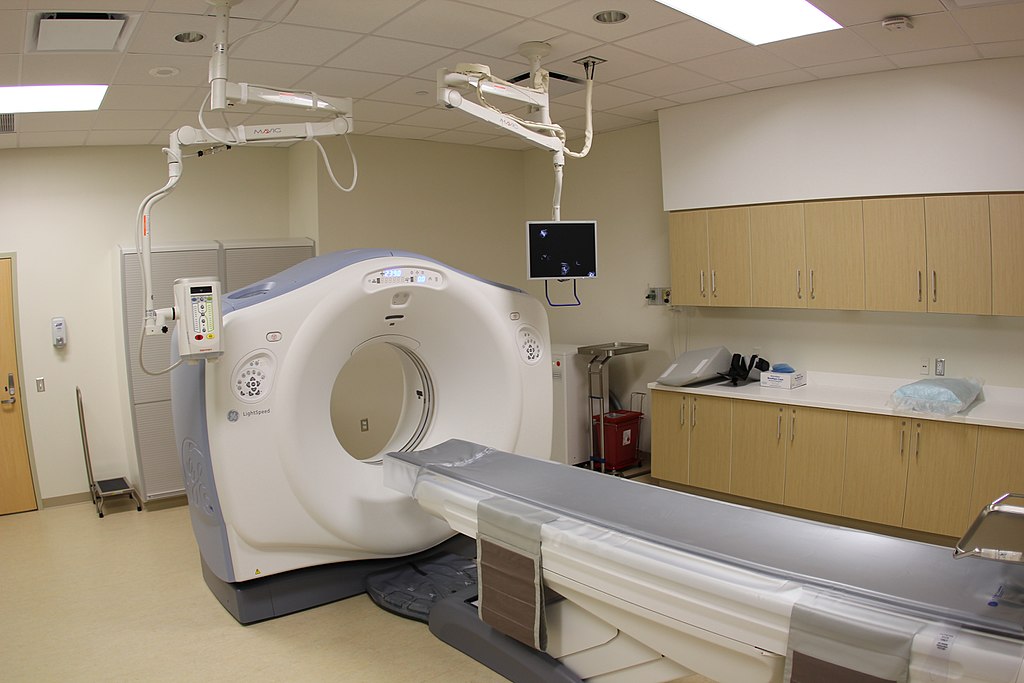COMPUTED TOMOGRAPHY(CT) |

Computed tomography scanning is a means by which the inside of the body can be imaged using a rotating x-ray machine which takes images from different angles around the body on a detector and by using powerful computer processing enables the production of images from the acquired data for diagnostic purposes. It is often considered as important a discovery as that of X-rays by Rontgen in that CT has revolutionised current medical practice worldwide.
Allan Cormack a South African physicist and Godfrey Hounsfield a British engineer are credited with this discovery with Hounsfield developing the scanner at EMI and producing the first clinical images of an axial section of the brain of a patient with Dr Ambrose a consultant neuroradiologist at Atkinson Morley Hospital in London in 1971.
Hounsfield and Cormack were to share the Nobel Prize in Physiology and Medicine in 1979 for their part in the discovery. In the mid 70s the CT scanner began to be used to image the body in cross-section.
Kalender in the late 1980s made advances with the technique by discovering spiral volumetric CT scanning which would enable the CT scans to be done faster and would enable 3-D images to be obtained.
REFERENCES |
|---|
| B THOMAS AMK BANERJEE AK BUSCH U Classic Papers in Modern Diagnostic Radiology Springer Verlag, Berlin, NY. 2005 ISBN 3540219277
B THOMAS A M K BANERJEE AK The History of Radiology OUP May 2013 U CT (Computed Tomography) Scans - A Level Physics, Dr PhysicsA A basic description of the mechanism of CT (computed tomography) scans for medical use in remote sensing. Part of the A Level Physics revision series. W CT Scan https://en.wikipedia.org/wiki/CT_scan |
| IMAGES |
|
GE LightSpeed CT scanner at Open House, Monroeville, Pennsylvania CC, daveynin |

